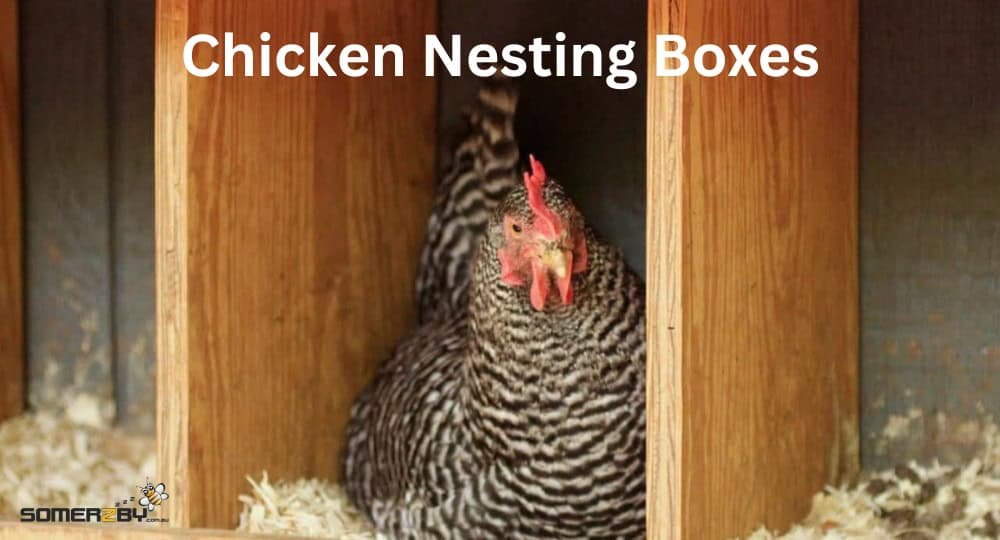Chickens
Chicken Nesting Boxes
Do Chickens Have To Have Nesting Boxes?
While chickens can lay eggs anywhere, they will often naturally be drawn to laying inside a nesting box. This is because it helps them to feel protected and secure.
Chicken nesting boxes are a benefit to chicken keepers as it makes egg collection easier. You don’t have to spend time searching your whole coop or yard looking for eggs. This also decreases the chance of eggs being broken or stepped on.
We recommend waiting until your hens are old enough to start laying eggs, around 18 weeks, before acquiring nesting boxes.
What Is A Nesting Box?
A nesting box is a specially designed enclosed space where birds and small animals can lay eggs, rest, or seek shelter. They are predominately used for chickens as a comfortable, private area for egg laying.
Nesting boxes offer protection from predators and are typically kept inside a chicken coop where hens can easily access them. Each nesting box can fit one chicken at a time.
Do you have some nesting box questions? Let us help!
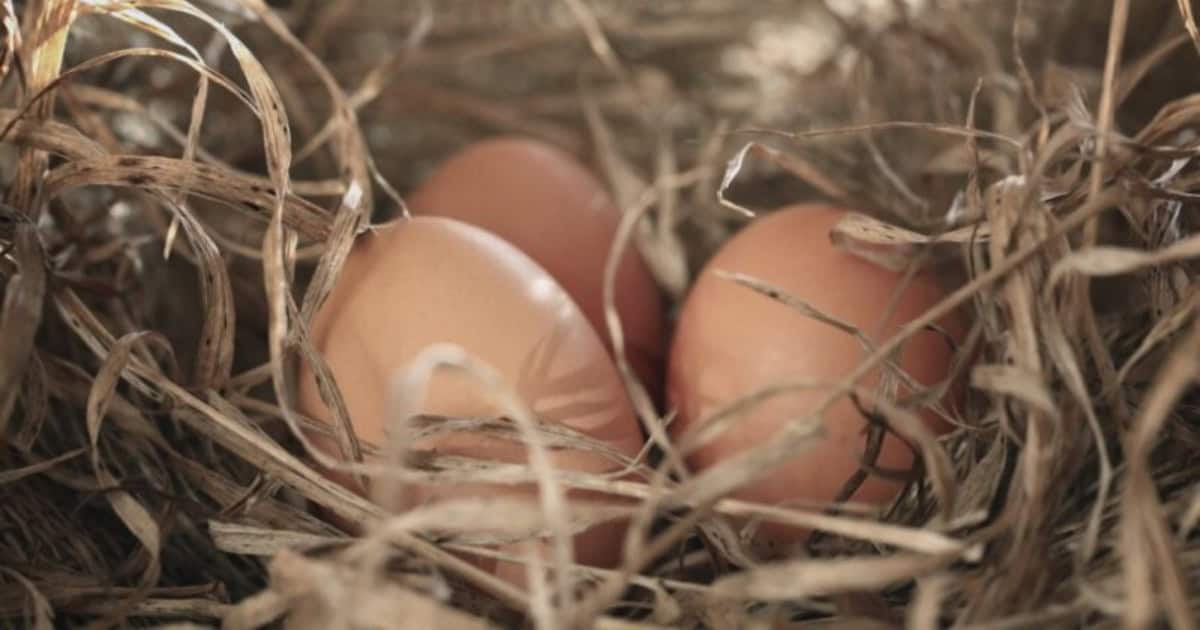
Encouraging Chickens To Lay In The Nesting Box
Your backyard chickens may choose not to lay in the nesting boxes if they prefer another space such as roosting spots. Encourage your hens to lay in their nesting box by making it a more comfortable nesting box.
If you are still having troubles consider moving the nesting box to a different section of the chicken coop which is quieter, away from the roosting spots. This will help them feel safe and encourage laying.
For the perfect nesting box, make sure it is enclosed, dark and gives your hens privacy. Line the nesting boxes with a comfortable bedding material. Your hens won’t want to lay their eggs on a hard, uncomfortable surface.
Ideal bedding or nesting materials include wood or pine shavings, straw, shredded paper or washable nesting pads. The bedding will need to be regularly cleaned out. Try different nesting material or bedding options until you find one your hens prefer.
By adding a fake egg or golf ball in the nesting boxes, you are showing your hens where to lay.
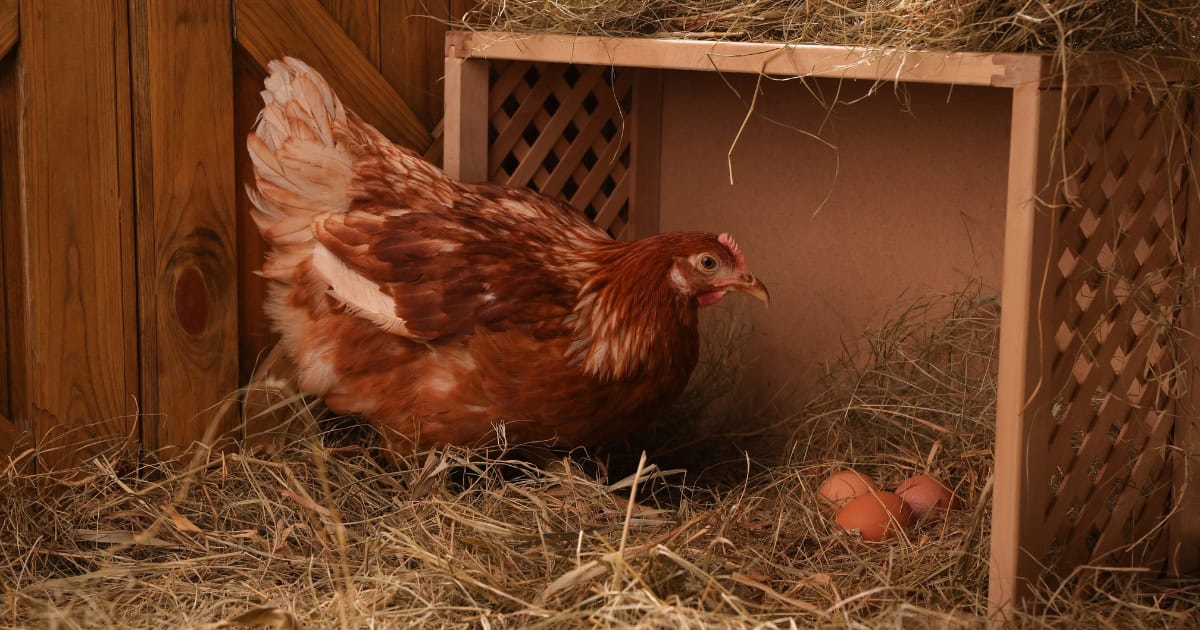
How Many Nesting Boxes Do I Need For My Chickens?
The perfect nesting box should be large enough to allow sufficient room to fit one chicken at a time. For an average sized hen, the adequate depth and nest size needs to be 30cm cubed.
Bantam breeds can have nesting boxes slightly smaller at 25cm cubed. Very large breeds may require nesting boxes larger at 35cm cubed.
For multiple hens, it’s important to know that chickens don’t need a nesting box each. They won’t all lay at the same time and they will be happy to share. You typically need 1 community nest box for every 3 chickens.
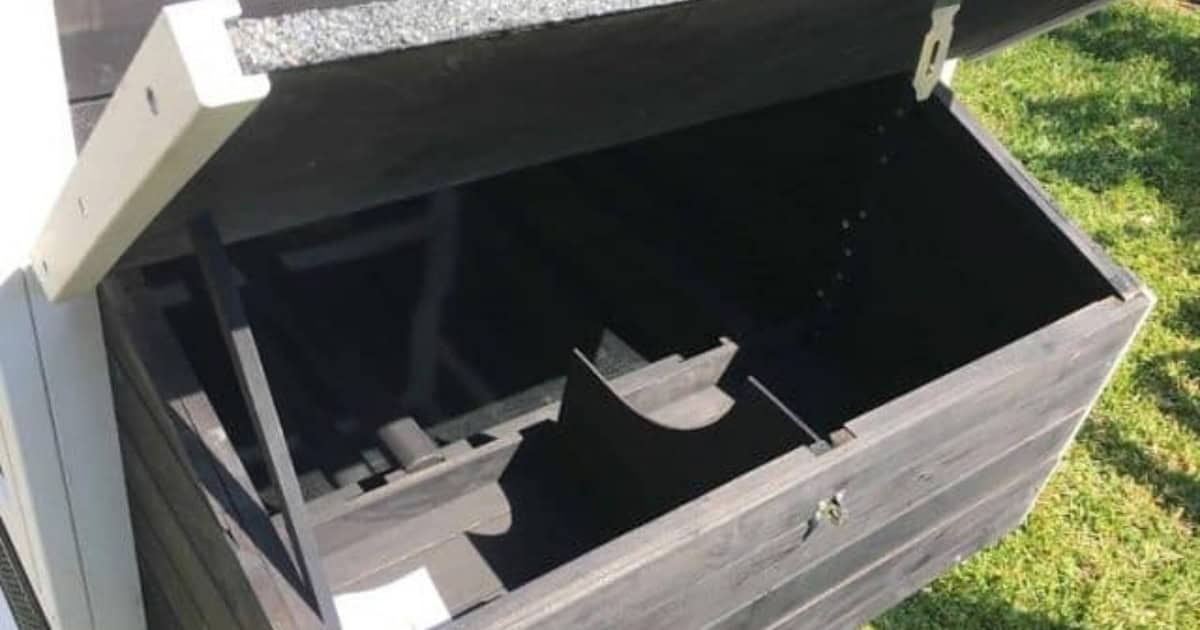
Nesting Boxes In Your Somerzby Chicken Coop
All Somerzby chicken coops come with nesting boxes. Many of our coops have a larger, higher nest box that is divided into 2 or 3 individual nesting spaces.
Most Somerzby nesting boxes are mounted onto the side of the coop with an opening lid for easy cleaning.
This allows you easy access to reach in and collect the eggs without having to get inside the coop yourself.
If you have a chicken coop that doesn’t have a nesting box, you could add one in yourself. You don’t necessarily have to have mounted boxes on the side of the coop.
You could place the nesting boxes inside of the coop’s enclosed area. Make sure you put it somewhere that is easy to reach, to make egg collection easier.
You can purchase pre-made nesting boxes from many farm supply stores. These can be made from wood, plastic or metal.
Many farm supply stores sell single nesting boxes or larger ones that are divided into multiple nesting spaces.
It will typically cost between $10-40 per nesting space.
Alternatively, you could make some yourself from new or recycled materials. Using scrap materials you already have (such as old pallets) will help cut costs.
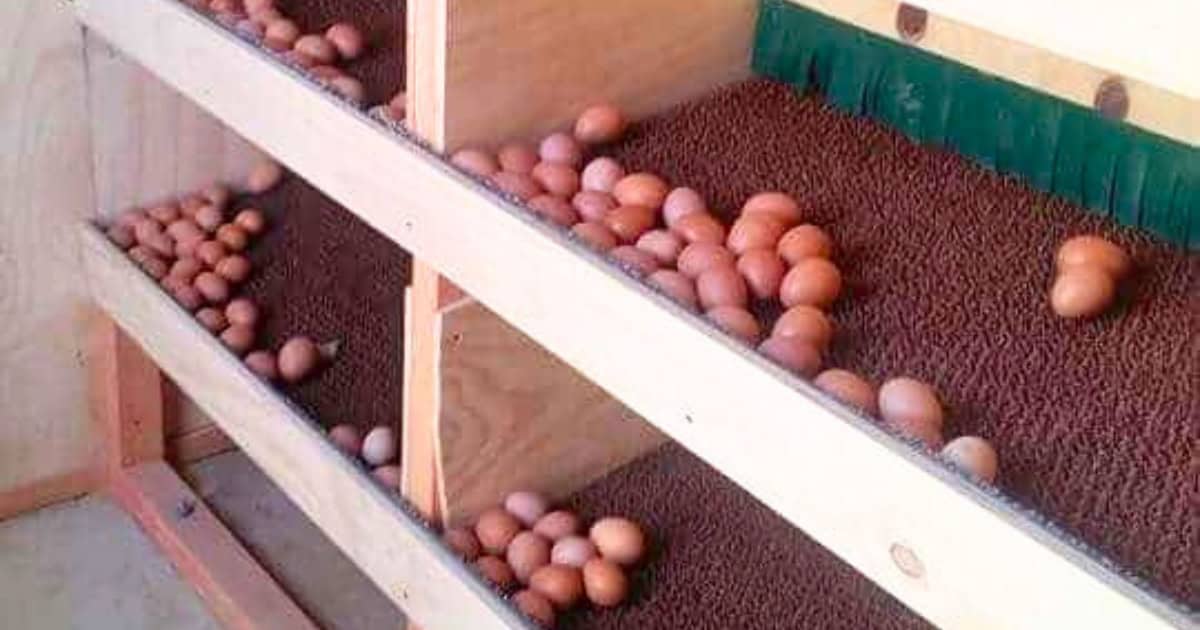
Rollaway Eggs
Rollaway nesting boxes have a slanted base which causes the eggs to roll towards the front or back of the nesting box.
There is often a lid covering the front or back section where the eggs roll to. The lid can be lifted and eggs collected daily.
The main purpose of rollaway nesting boxes is to protect the eggs.
By allowing the eggs to automatically move to a covered area at the front or back of the nesting box, the risk of accidental breakage by the hens is reduced. This also helps keep the eggs cleaner.
Another benefit of rollaway nesting boxes is that they prevent hens from getting broody from sitting on their eggs too long.
How To Build A Nesting Box
The general idea when making your own nesting boxes can be quite simple!
Even someone who isn’t too “handy” will be able to do it.
You could choose to either build individual nesting boxes or create one longer nesting box and then add divider walls throughout to create multiple nesting spaces for your hens.
Including a lip on the edge of your nesting box will prevent eggs from rolling out and breaking. It will also keep all the bedding material inside the nesting box.
Your nesting box does not need a closed top. It can be open. However, an enclosed nesting box may help your hens to feel safe and therefore they are more likely to lay their eggs there.
If it has a closed top, make sure it is tall enough for your chickens to walk into.
If your chicken coop is taller, you can stack nesting boxes on top of one another to save space. Make sure you secure them properly so they don’t wobble or move.
Lightweight plastic nesting boxes will need to be attached to something so they don’t move when the hens are using them.
Heavier nesting boxes may not need to be secured. It depends on how likely they are to move. It can be a good idea to secure them just in case. You could screw them to your coop’s walls or floor.
Adding a peaked or sloped roof will prevent chickens from laying eggs on top of the nesting boxes. If they do this, the eggs are much more likely to break.
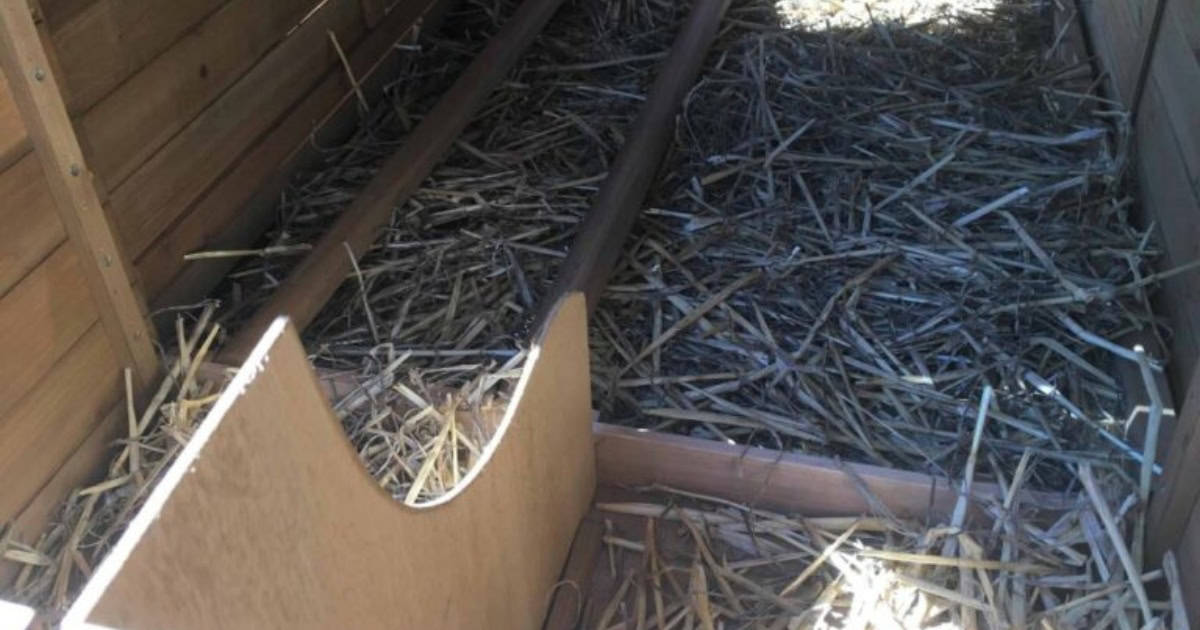 DIY Nesting Box Plans & Designs
DIY Nesting Box Plans & Designs
The simplest nesting box plans are designed to be made from recycled items that are already box shaped.
You will be surprised how many items around your home could be easily turned into nesting boxes. These include:
Plastic Milk Crate
The simplest way to turn a plastic milk crate into a nesting box is to lay it on its side. Add a lip along the front by attaching a piece of wood. This will prevent eggs rolling out.
Alternatively, leave the plastic milk crate the correct way up and cut a large opening out of the front so the chickens can access the box.
Leave a small lip at the bottom. This method makes it very easy to stack multiple nesting boxes on top of one another.
Wine Barrel
Lay the wine barrel on its side. Using a drill, screw a wooden board onto the front of the wine barrel along the bottom.
Make sure the wooden board is longer than the width of the barrel. This board will stop the barrel from rolling and also act as a lip to prevent eggs from rolling out.
Bucket Nesting Boxes
Using the same technique as the Wine Barrel above, lay the plastic bucket (storage bins) on its side and attach a wooden board along the bottom.
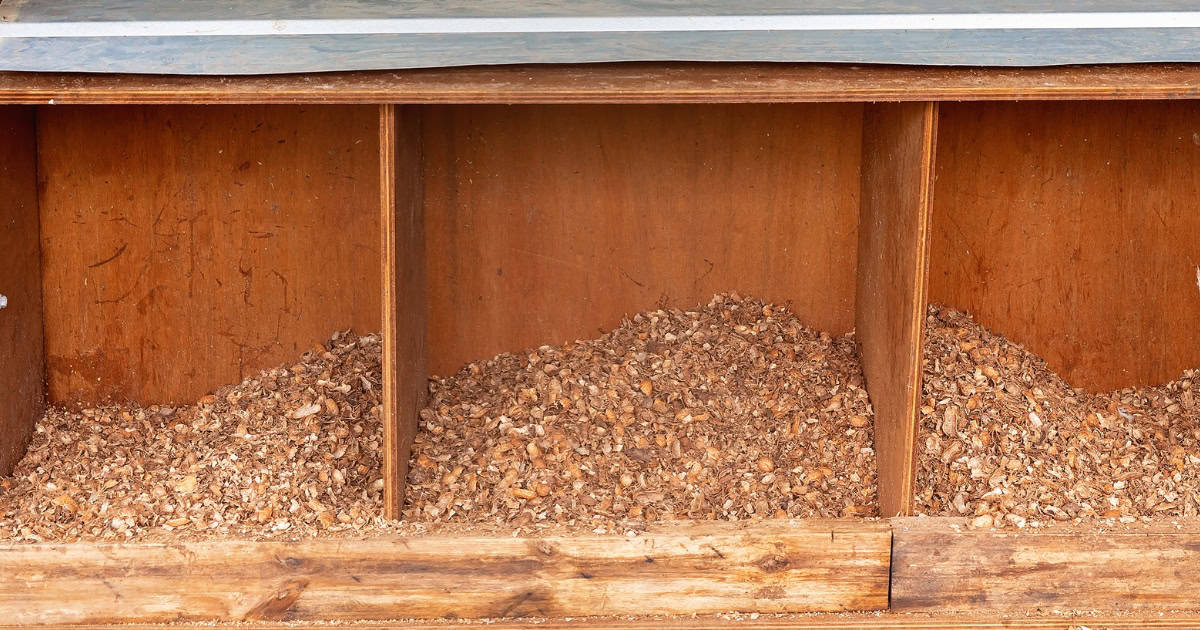 Cube Book Shelves
Cube Book Shelves
Cube book shelves can be purchased very cheap from furniture, department and second-hand stores.
Simply screw a wooden board along the bottom of each row to prevent eggs rolling out.
Litter Boxes
An old cat litter box makes a great nesting box.
Most won’t need any alternation. If it is a hooded cat litter box, the flap will need to be removed and you will need to make sure your hens can fit through the opening.
Similarly, an old plastic pet carrier or storage bins may also be suitable, with the door removed.




